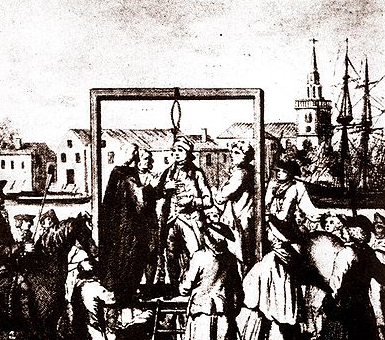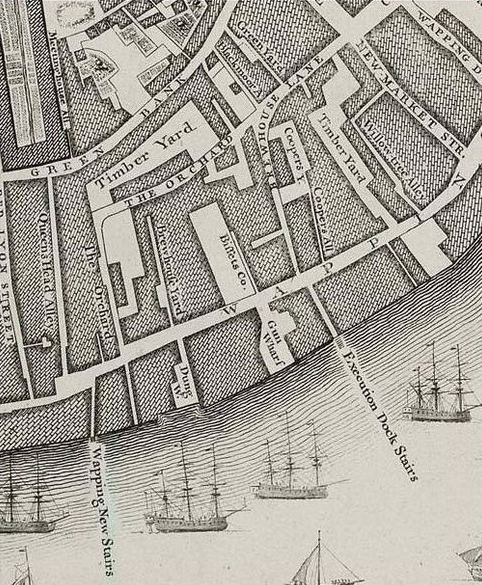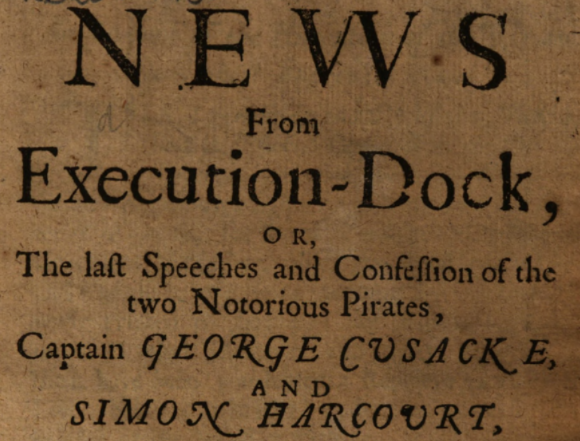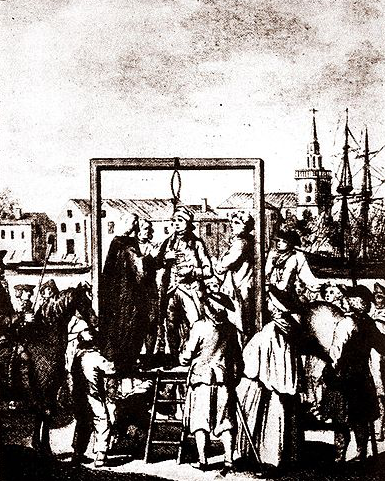
For over 400 years, bodies hung from the gallows located on the foreshore of the River Thames, in Wapping, London. They were the bodies of pirates, smugglers, and mutineers. Anyone convicted of a crime while at sea was given the slow strangle on Execution Dock.
In England, both men and women could be condemned for the crime of piracy. After conviction and on the day of execution, the condemned was placed in a cart and taken to the dock. Sometimes the pirate was paraded through the streets, across London Bridge and past the Tower of London.
Crowds lined the way, yelling at the condemned and throwing mud and rotten vegetables at him.

A chaplain accompanied the condemned so that the prisoner would have the opportunity to confess his sins.
The Admiralty Marshal, a man in charge of those who committed crimes at sea, led the way to the dock. The Marshal rode on horseback and carried a silver oar that symbolized his position.
Before reaching the wooden gallows, the condemned were taken to The Turks Head Inn. It was the local pub, and each of the condemned were given a quart of ale to drink before their hanging.

It was low tide, and the crowds loved a good execution. Entire families, including young children, would show up for the big event.
The streets were filled with people watching the condemned being taken to the dock. On the banks, people packed themselves together to get the best view. There were even boats on the water filled with eager watchers who no doubt paid a good amount of coin to get such good seating away from the crowds on shore.
Upon reaching the gallows, the condemned were allowed to make a short speech.
Unlike other hangings where the goal was to drop the condemned so that his neck would be broken, those condemned of piracy were given the short rope.
The noose was placed over their heads and they were left to dangle and slowly strangle. Their legs would jerk about in the air in what was called the Marshal’s Dance.

When the dance came to a stop, the bodies were then left to swing. High tide would come in and the bodies would be completely immersed in the water.
Three tides had to cover the bodies before they could be cut down and buried.
If the condemned was well known, his dead body would be placed in a gibbet and left to hang at Cuckold’s Point or Blackwell Point for a few years.
When the gibbet was finally taken down, the body would be buried while it was still inside the gibbet, adding a final insult to the dead.
The last executions on the dock took place on December 16, 1830.
The condemned men were George Davis and William Watts. Both had been convicted of murdering a ship’s captain.
Today, the exact location of Execution Dock is disputed.

